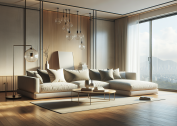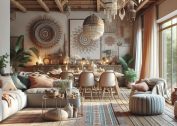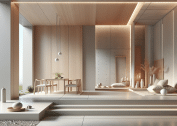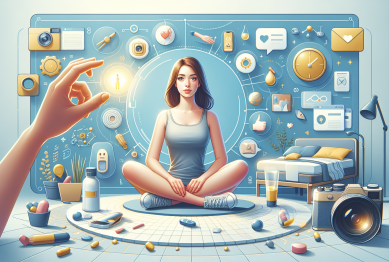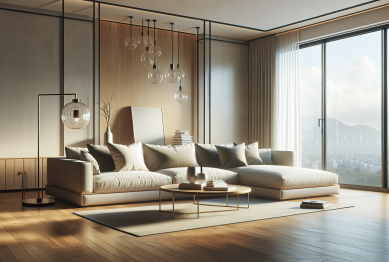Discover lifestyle strategies and home decor ideas that let your personality shine while staying mindful of sustainability. Explore trending concepts for living spaces, interior aesthetics, eco-conscious design, functional style, and wellbeing at home—all tailored to match evolving tastes and support mindful living.
The Rise of Personalized Home Decor
Individual expression shapes today’s lifestyle trends, especially in home decor. Many people are moving away from one-size-fits-all looks, seeking unique elements that reflect their identity. Curating personal art, custom furniture, and sentimental objects is often at the core of these efforts. This approach invites comfort and authenticity, ensuring that interiors align with deeper lifestyle values. Design flexibility lets inhabitants shift aesthetics as their lives evolve, establishing a sense of ownership over every corner.
Personalized environments foster emotional wellbeing. Incorporating heirlooms, family photographs, or DIY crafts can produce feelings of warmth and nostalgia. These inclusions mean home isn’t just a space to live—it’s an ever-evolving gallery of life’s memories. The growing market for artisanal decor and bespoke interiors highlights demand for one-of-a-kind, story-driven spaces. Inspiration can be found in global cultures, turning living rooms and kitchens into reflections of journeys, dreams, and ambitions.
Many decorators encourage mixing old and new for a layered, eclectic style. Repurposed family furniture alongside modern design accessories adds depth and personality. Highly personalized spaces are shown to support relaxation, focus, and creativity, indicating that lifestyle and mental health are closely connected (Source: https://www.apa.org/monitor/2020/07/home-decor). As trends continue to shift, individuality remains at their core.
Sustainable Living Inspires Everyday Choices
Eco-conscious living has become central to both lifestyle and home design choices. Recycled materials, energy-efficient lighting, and upcycled decor now shape many households. Shoppers increasingly seek certified sustainable products, from bamboo floors to organic cotton textiles. This movement encourages mindful consumption—choosing fewer but better-made pieces. By focusing on quality and durability, individuals reduce waste and lead by example within their communities (Source: https://www.epa.gov/smm/sustainable-management-materials).
Green design isn’t limited to materials. Indoor plants have become symbols of sustainable decor, supporting air quality and emotional health. Smart layouts that maximize natural light, combined with energy-saving practices, appeal to people wanting to lower their environmental impact. Simple changes—like switching to LED bulbs or composting kitchen waste—add up. These habits inspire friends, neighbors, and family to follow suit, building community resilience.
Embracing sustainability can also mean returning to slower, more intentional living. Repairing instead of replacing damaged items, and seeking timeless designs, encourage appreciation for craft and heritage. All these choices support a more environmentally friendly lifestyle, strengthening the bond between personal happiness and planetary wellbeing.
Functional Spaces Enhance Everyday Wellbeing
For many, home is now a hub for work, socializing, and self-care. Functional layouts support these diverse demands, with flexible furniture and dedicated zones becoming popular. Open-plan living, moveable partitions, and convertible furnishings let people seamlessly shift from productivity to relaxation. Multifunctional spaces help residents maintain routines and purposeful organization, even amid busy lives. This approach to interior design supports physical and mental wellbeing (Source: https://www.ncbi.nlm.nih.gov/pmc/articles/PMC8501377/).
The growing trend of home offices highlights the value of adaptability. Ergonomic seating, ample natural lighting, and clutter-free backdrops allow for focused work and creative thinking. Sound-absorbing panels and designated work corners, even in small apartments, ease transitions between professional and private life. Design solutions supporting flexible roles—parent, remote worker, hobbyist—can empower individuals to thrive within the same four walls.
Functional design also considers accessibility for all ages and mobilities. Thoughtful placement of furniture, wider walkways, and adjustable counters create inclusive, comfortable environments. This attention to layout enhances safety and emotional comfort, reinforcing the idea that stylish living can meet everyone’s needs without compromise.
Biophilic Design Brings Nature Indoors
Biophilic design bridges the gap between indoor life and the outdoors. The use of natural textures, indoor gardens, and earth-inspired palettes promotes a calming atmosphere. Features such as vertical gardens or large windows provide visual connections to green spaces, supporting emotional health and relaxation. Studies suggest that even brief exposure to nature within the home can improve focus and lower stress (Source: https://www.health.harvard.edu/mind-and-mood/natural-environments).
For urban dwellers with limited access to backyards, adding potted trees, water features, or moss walls introduces greenery to small spaces. Nature-themed art, stone or wood finishes, and botanically inspired textiles further the connection. These elements invite a sense of tranquility, which can benefit overall wellness and rejuvenation. Biophilic principles may be as simple as arranging favorite houseplants by windows or integrating organic patterns into everyday decor.
Outdoor living areas—balconies, patios, or rooftop gardens—reflect the popularity of bringing daily routines outside. These extensions are often designed with comfort and sustainability in mind, providing fresh air, sunlight, and opportunities for social gatherings. Blending inside and out, homes become true retreats that nurture the mind and spirit.
Minimalism Meets Creative Expression
Minimalist lifestyles continue to resonate, especially as clutter-free spaces offer clarity and peace. However, plain minimalism is seeing a creative reimagining. Abstract art, bold accent walls, and playful geometry can all coexist with simple layouts. This blending allows spaces to remain airy and functional while reflecting a sense of joy and originality. Choosing key statement pieces—like a colorful rug or sculptural lamp—underscores personal taste without overwhelming the senses.
Decluttering as a practice makes room for growth. Organized systems enable fast transitions between tasks and reduce daily stress. Some individuals go further, adopting digital minimalism by unplugging devices during set hours, creating sanctuary-like environments free of distractions. Purposeful decorating—placing only what is needed and truly loved—supports a more mindful way of living.
Minimalism’s flexibility means it can be adapted to suit any lifestyle or design preference. Whether seeking a serene oasis, a playful workspace, or a blend of both, anyone can experiment with balance, color, and function. The focus shifts to intention, well-chosen decor, and meaningful living, revealing that even the simplest settings can spark creativity.
Technology Blends Into Lifestyle Seamlessly
Integrating smart home technology into houses and apartments is no longer just about convenience. It’s about harmony and aesthetic appeal. Voice-activated assistants, discreet sensors, and automated lighting are now being customized to fit individual routines and preferences, merging seamlessly into the background of day-to-day living (Source: https://www.cnet.com/home/smart-home/how-smart-home-devices-fit-into-your-life/).
New design trends focus on concealing wiring, integrating wireless charging hubs, and linking appliances for energy efficiency. Adaptive climate control, security systems, and streaming audio create immersive experiences without visual clutter. Technology also supports sustainability, with smart thermostats and irrigation systems helping individuals reduce environmental footprints naturally.
Despite the high-tech advancements, the trend remains user-centric. The aim is to enhance comfort, security, and connectivity without diminishing the authenticity or coziness of a home. As these devices become more intuitive, they support daily routines while encouraging leisure, productivity, and better health—for everyone in the household.
References
1. American Psychological Association. (2020). The psychology behind home decor. Retrieved from https://www.apa.org/monitor/2020/07/home-decor
2. U.S. Environmental Protection Agency. (2023). Sustainable management of materials. Retrieved from https://www.epa.gov/smm/sustainable-management-materials
3. National Center for Biotechnology Information. (2021). Home environments and health. Retrieved from https://www.ncbi.nlm.nih.gov/pmc/articles/PMC8501377/
4. Harvard Health Publishing. (2019). Natural environments as natural medicine. Retrieved from https://www.health.harvard.edu/mind-and-mood/natural-environments
5. CNET. (2023). How smart home devices fit into your life. Retrieved from https://www.cnet.com/home/smart-home/how-smart-home-devices-fit-into-your-life/
6. National Center for Biotechnology Information. (2021). Effects of the built environment on mental health. Retrieved from https://www.ncbi.nlm.nih.gov/pmc/articles/PMC8076728/




